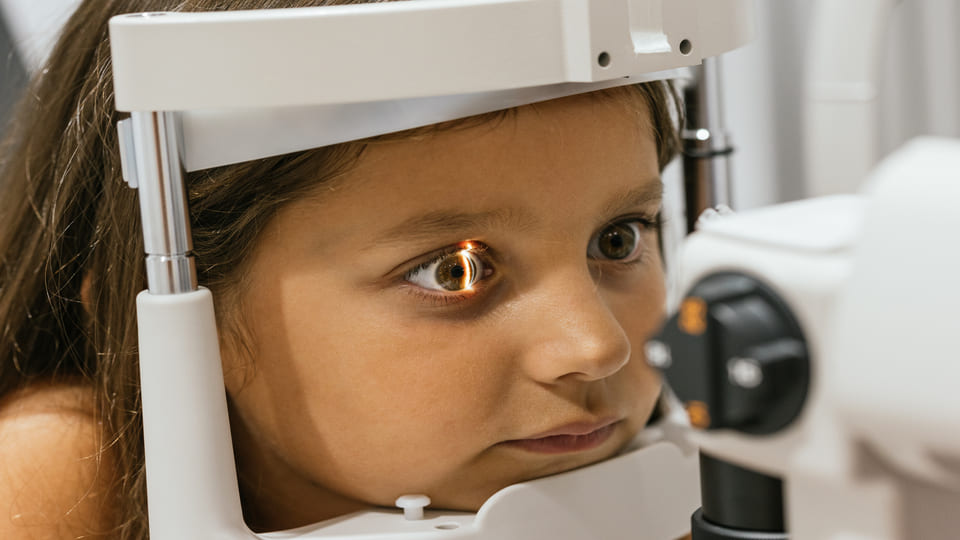
30/06/2025
Unravelling the Genetic Threads: The Role of Genetics in Paediatric Cataracts and Retinal Conditions
Paediatric cataracts and retinal disorders are among the leading causes of childhood blindness worldwide. While infections, trauma, or metabolic diseases may sometimes play a role, genetics is increasingly recognized as a primary factor. As our understanding of human genetics expands, so does our ability to trace many vision-threatening conditions in children back to their DNA.
Understanding Paediatric Cataracts
A cataract is a clouding of the lens of the eye that blocks or distorts light from reaching the retina. In children, cataracts can be present at birth (congenital) or develop during early childhood (developmental). Roughly 25–50% of paediatric cataracts have a genetic basis.
Genetic cataracts are often inherited in an autosomal dominant fashion, meaning a child has a 50% chance of inheriting the condition if one parent carries the gene. However, autosomal recessive and X-linked patterns are also seen. Mutations in more than 30 genes have been linked to isolated congenital cataracts. These genes play roles in lens development, transparency, and metabolism. For example, mutations in crystallin genes (such as CRYAA, CRYBB2) can lead to structural defects in the lens proteins, causing them to clump and form opacities.
In other cases, paediatric cataracts are part of broader genetic syndromes. Conditions like Down syndrome, Lowe syndrome, or galactosemia often include cataracts among their features. In these syndromic forms, the lens abnormality may be just one of many developmental problems caused by a single genetic mutation.
Genetic Roots of Retinal Conditions
The retina is a complex, layered structure that transforms light into neural signals for the brain to interpret. A wide range of genetic mutations can affect this delicate process, leading to paediatric retinal disorders. These may present at birth or gradually worsen over time.
Inherited retinal dystrophies (IRDs) such as Leber congenital amaurosis (LCA), retinitis pigmentosa, and Stargardt disease are typically caused by mutations in genes responsible for photoreceptor function or the retinal pigment epithelium. For instance, mutations in RPE65, CEP290, or CRB1 are known causes of early-onset retinal blindness. These conditions are usually inherited in autosomal recessive patterns, meaning both parents must carry the mutation for a child to be affected.
Some retinal diseases, like X-linked retinoschisis, are passed on through the X chromosome and primarily affect boys. In such cases, female carriers may have mild symptoms or be unaffected but can still transmit the disease.
Moreover, mitochondrial DNA mutations passed solely from the mother—can also lead to certain retinal conditions, like optic atrophy.
The Promise of Genetic Testing
Advancements in genetic testing have revolutionized the diagnosis and management of paediatric eye diseases. A precise genetic diagnosis can confirm the cause of a child’s vision loss, guide treatment choices, and inform parents about recurrence risks for future children.
Importantly, genetic insights are opening doors to emerging treatments. One example is gene therapy for RPE65-related retinal dystrophy, approved in several countries, which has restored functional vision in some children. Ongoing research aims to develop similar therapies for other retinal and lens-related genes.
Counselling and Care
Genetic counselling plays a vital role in helping families understand the implications of a diagnosis. For many, learning that a condition has a genetic basis can provide clarity and emotional relief shifting the narrative from “Why did this happen?” to “How can we plan for the future?”
Early detection, multidisciplinary care, and genetic support are essential to improving visual outcomes and quality of life in children affected by these conditions. As science continues to reveal how our genes shape vision, the hope is not only to better manage paediatric cataracts and retinal disease but to prevent or even cure them in future generations.
Conclusion:
Genetics is not destiny but understanding its influence on childhood eye conditions allows for earlier interventions, personalized treatment, and, increasingly, life-changing therapies that restore sight and hope.
Schedule a Consultation Today
For consultation, please contact us:
- Email: appointments@barraquer.ae
- Phone (Outside the UAE): +971 4 573 9999
- Toll-Free (Within the UAE): 800 234823 (BEHUAE)
- Availability: 7 days a week, from 9:00 AM to 6:00 PM
Extended hours on Thursdays until 8:00 PM
Our team will be pleased to assist you.